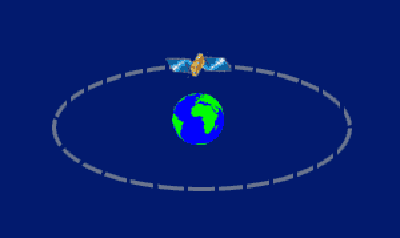
Satellites in geostationary orbits orbit the Earth once every 24 hours in the plane of the Earth's equator. Because the Earth also spins on it's axis once every 24 hours, the satellite appears above the same spot on the equator all the time – hence the name geostationary. Three geostationary satellites are sufficient to cover most of the Earth's surface. This makes the satellite useful for several purposes.
-
Satellite TV. Satellite TV is usually per country. A satellite stationary above one country may be used for satellite TV in that country alone.
-
There are mobile phone networks that transmit calls via geostationary satellites.
There are several disadvantages however. The satellites cannot 'see' the North or South poles, so are of no use in providing services there, and the distance of a geostationary satellite from the Earth is much greater than for polar satellites, so more power is required to obtain an adequate signal, and these satellites are more expensive to launch and repair because of their greater diatance from the Earth.
